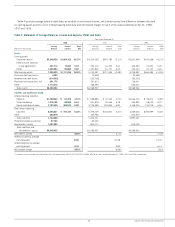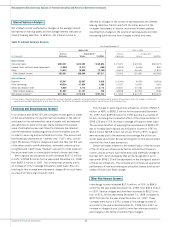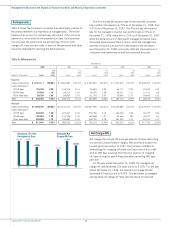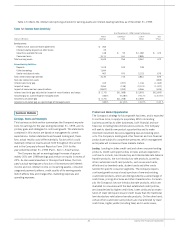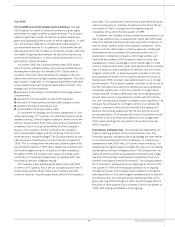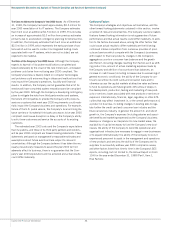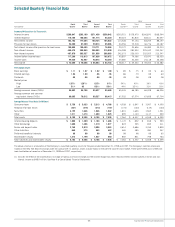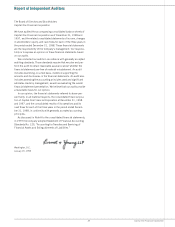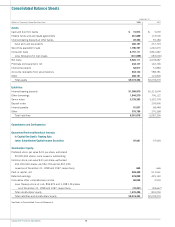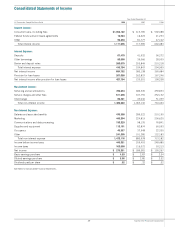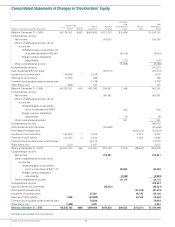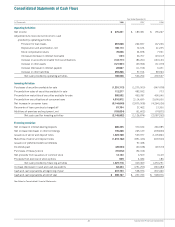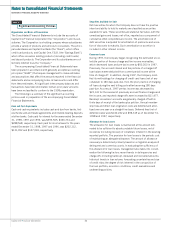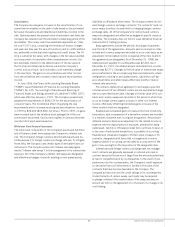Capital One 1998 Annual Report Download - page 35
Download and view the complete annual report
Please find page 35 of the 1998 Capital One annual report below. You can navigate through the pages in the report by either clicking on the pages listed below, or by using the keyword search tool below to find specific information within the annual report.
33 Capital One Financial Corporation
associates. The Company has inventoried and assessed these appli-
cations and expects to complete renovations by the end of the sec-
ond quarter of 1999, a change from the original projected
completion of the end of the first quarter of 1999.
In addition, the Company utilizes outside business vendors in its
day-to-day operations and is assessing the overall year 2000 readi-
ness of its external business vendors and year 2000 compliance of
specific vendor systems used in the Company’s operations. These
vendors include credit bureaus, collection agencies, utilities and
other related service providers, third party processors, the U.S.
postal service, telephone companies, technology vendors, and
banks that are creditors of the Company or which provide cash
management, trustee, paying agent, stock transfer agent or other
services. These vendors also include third parties that the Company
uses to outsource certain operations for America One, the United
Kingdom and Summit. In assessing overall compliance, the Com-
pany requests information from its vendors about their actions to
become year 2000 compliant, placing extensive focus on its high
priority vendors. The Company, however, must rely on the actions of
and the information provided by its vendors and cannot guarantee
that vendor systems will, in fact, be compliant. For high priority
vendors that the Company determines may not be taking appropri-
ate and timely action or have failed to provide sufficient informa-
tion, the Company will accelerate contingency planning efforts. The
Company has increased its contingency efforts to accelerate the
vendors’ compliance efforts and/or internally build systems for
America One’s billing systems and the UK and Summit account
processing systems. The Company will continue to actively monitor
the efforts of all of its vendors and take actions to mitigate year
2000 issues resulting from any failure of its vendors to be year
2000 compliant.
The Company’s Contingency Plan The Company has established con-
tingency planning projects for its critical business units. The
Company’s general contingency planning strategy has been refined
to include the achievement of four milestones: (i) inventory and
assessment of year 2000 risks, (ii) business impact analysis, (iii)
developing contingency plans to mitigate the risks, and (iv) testing
and validation of these contingency plans. The Company has com-
pleted all of the inventory and assessment milestones and a large
majority of the business impact analysis milestones for all of its
domestic lending and America One projects. The Company expects
all of its domestic lending plans to be developed by the end of the
first quarter of 1999, with testing and validation to be ongoing
throughout the year. The Company has increased its contingency
planning efforts for its United Kingdom operations and for Summit
and America One. The Company will be developing these contin-
gency planning efforts throughout 1999, and anticipates that the
execution of those plans will be completed in the fourth quarter of
1999, with testing and validation to be ongoing.
Year 2000
The Year 2000 Issue and the Company’s State of Readiness The year
2000 problem is a result of computer systems using two digits
rather than four digits to define an applicable year. The Company
utilizes a significant number of internal computer software pro-
grams and operating systems across its entire organization. In addi-
tion, the Company depends on its external business vendors to
provide external services for its operations. To the extent the soft-
ware applications of the Company or its vendors contain codes that
are unable to appropriately interpret the year 2000 and beyond,
some level of modification, or even possibly replacement of such
applications, may be necessary.
In October 1996, the Company formed a year 2000 project
office to identify software systems and computer-related devices
that required modification for the year 2000. Shortly after its
inception, the project office developed its strategy for the Com-
pany's information technology computer-based systems. This strat-
egy is based, in large part, on the regulatory guidelines published
by the Federal Financial Institutions Examination Counsel. This
strategy calls for five milestones:
■awareness of the existence of information technology systems
Company-wide;
■assessment of those systems for year 2000 readiness;
■renovation of those systems and their date coding functions;
■validation (testing) of renovations; and
■implementation of all renovations made.
To implement this strategy, the Company categorized its infor-
mation technology (“IT”) systems into year 2000 projects and by
domestic lending, United Kingdom operations, America One and
Summit. Approximately 63% of the projects have completed all
milestones, which includes substantially all of the Company’s
mission critical systems. Another 22% are in the
validation
and
implementation
stages, and the remaining 15% are in the
assessment
and
renovation
stages. The Company expects to com-
plete all project milestones by the end of the second quarter of
1999. This is a change from the previously projected date of the
end of the first quarter of 1999 and is largely due to Summit and
the United Kingdom projects. In addition to these milestones,
throughout 1999, the Company will conduct an internal audit
certification of its testing measures and, for systems with cross
functionality, perform integrated testing.
The Company is also addressing the effect of the year 2000
on other non-IT systems, which are not included as part of the IT
project areas set forth above. These non-IT systems primarily
consist of desk top computer applications used by the Company's


